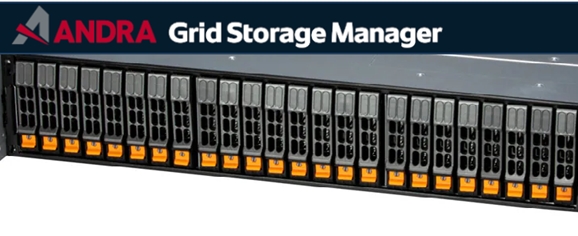STORANDER Enterprise One

STORANDER is a unified Software-Defined Storage platform designed to scale up and out to make storage management easy while reducing overall enterprise storage costs.
 STORANDER Enterprise One KEY FEATURES
STORANDER Enterprise One KEY FEATURES
Storage Grid Technology
STORANDER Enterprise One’s storage grid technology is a built-in federated management system which enables STORANDER Enterprise One servers to be combined together to simplify management and automation via CLI and REST APIs.
Flexible, Modular Architecture
The layered architecture of STORANDER Enterprise One provides solution engineers with unprecedented flexibility and application design options that maximizes workload performance and fault-tolerance for a wide range of storage workloads.

End-to-End Security
STORANDER Enterprise One includes end-to-end security coverage enabling multi-layer data protection “on the wire” and “at rest”.
Virtualized Database and OLTP Applications
STORANDER Enterprise One system is ideal for the heavy IOPS workloads seen with databases and OLTP applications that run within a virtualized environment. No SPOF architecture and failover management technology ensures that applications always have access to their storage even in the event of a component failure or outage. STORANDER Enterprise One delivers both file and block storage via all major protocols including NFS, CIFS, iSCSI, and Fibre Channel so that applications can make use of any given configuration for both structured and unstructured data.
STORANDER Enterprise One architecture
STORANDER Enterprise One storage system is redundantly built end to end. There is no single point of failure across all components of the system or cluster built on a multi-number of nodes. Power supplies, NVMe controllers, connectivity controllers, and mirrored cache are redundant by design. The online firmware upgrade is offered to maintain business continuity.
NVM Express architecture
STORANDER Enterprise One storage system is built with dual redundant NVMe controllers. Each of the 24 dual-port NVMe Flash SSDs is connected thru 4 x PCI 5.0 lanes. NVMe controllers are equipped with mirrored cache with capacity size depending on model and quantity of storage expansion units. NVMe controllers implement an innovative “mesh” on-chip interconnect topology that delivers low latency and high bandwidth.
Host connectivity architecture
STORANDER Enterprise One storage system is built with dual redundant processors for host connectivity’s. The number of redundant host ports is even by design (Fibre Channel, iSCSI, NVMe-oF) and is evenly distributed thru redundant processors by even number of host adapters.
 STORANDER Enterprise One MAIN FEATURES
STORANDER Enterprise One MAIN FEATURES
|
Feature |
Technical specifications |
|
Supported block protocols |
iSCSI Fibre Chanel NVMe-oF |
|
Supported file protocols |
NFS (optional) |
|
Connectivity ports |
2 x 100 Gbit Ethernet optical 8 x 32 Gbit Fibre Channel optical 8 x 25 Gbit Ethernet optical |
|
Connectivity ports |
Up to 4 x 100 Gbit Ethernet optical Up to 8 x 25 Gbit Ethernet |
|
Cache |
Up to 4 TB mirrored cache |
|
Data protection
|
Single drive failure protection Dual drive failure protection |
|
Data usage effectiveness
|
Compression Deduplication (optional) Thin provisioning |
|
SSD PCI high-performing |
Capacity: 3.68 TB, 7.68 TB, 15.36 TB Random Write up to 114K IOPS – 4K Blocks Latency < 75 μs |
|
Reliability |
MTBF – 2 000 000 hours Vibration – Operating 2.17 GRMS (5 - 700 Hz) Max Uncorrectable Bit Error Rate (UBER) 1 sector per 10^17 bits read |
|
Management |
ANDRA Grid Storage Manager |
|
Security |
Encryption standard – FIPS 140-2 |
|
Operating Systems validation |
MS Windows, Mac OS X, Linux, IBM AIX, HP-UX, VMware, |
|
Form factor |
2U |
|
Scalability |
No limit GRID |
|
Input Power Requirements |
180VAC-240VAC, 50Hz/60Hz |
|
Power Supplies |
Redundant Power Supplies 1600W |
© 2023 ANDRA Sp. z o.o. Seagate, Seagate Technology is registered trademarks of Seagate Technology LLC in the United States and/or other countries. Exos, the Exos logo, and Seagate Secure are either trademarks or registered trademarks of Seagate Technology LLC or one of its affiliated companies in the United States and/or other countries. All other trademarks or registered trademarks are the property of their respective owners. When referring to drive capacity, one gigabyte, or GB, equals one billion bytes and one terabyte, or TB, equals one trillion bytes. Your computer’s operating system may use a different standard of measurement and report a lower capacity. In addition, some of the listed capacity is used for formatting and other functions, and thus will not be available for data storage. Actual data rates may vary depending on operating environment and other factors, such as chosen interface and disk capacity.
